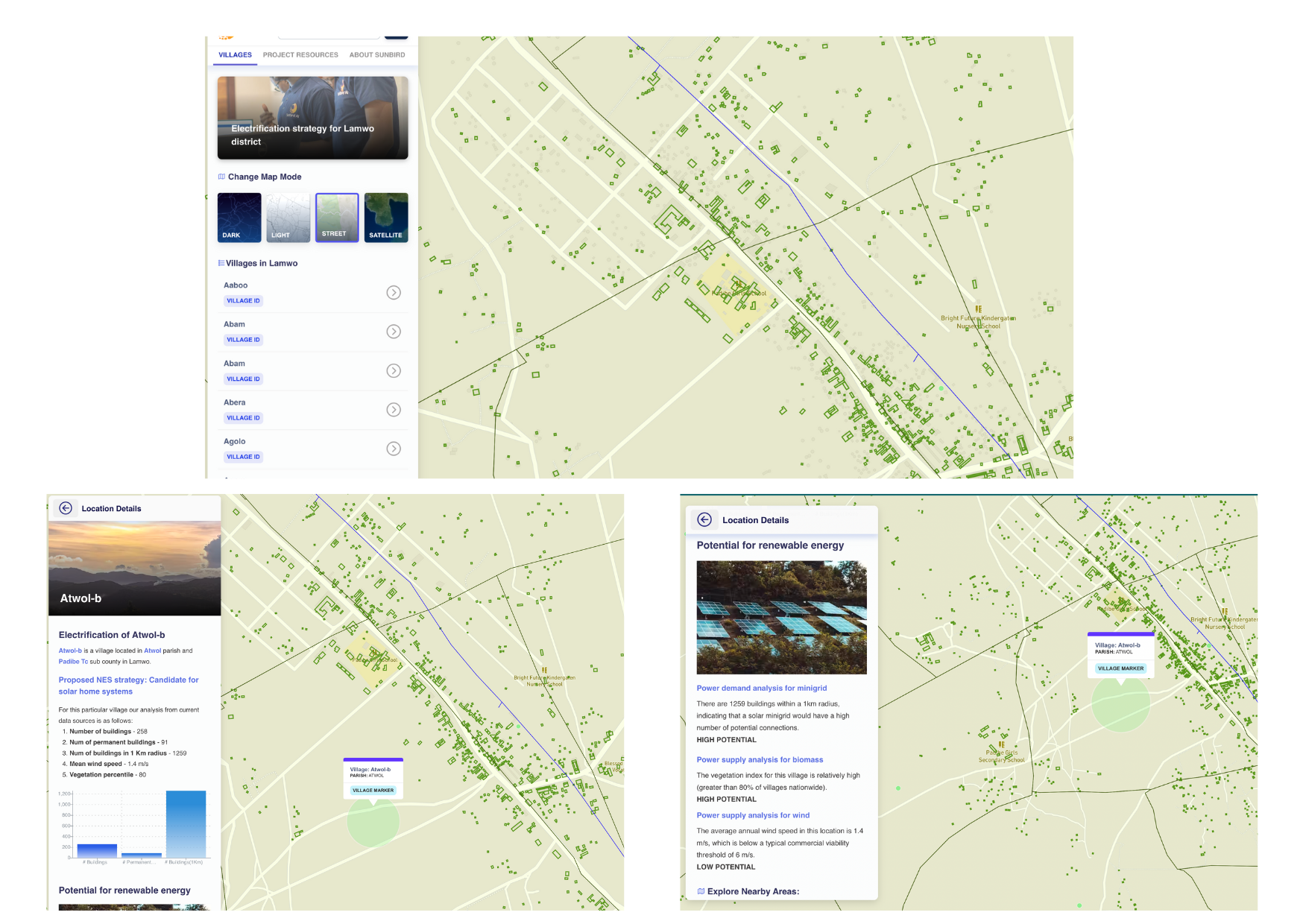Lighting Lamwo
- emwebaze
- October 11, 2022
“I’m able to continue serving my customers till as late as 10pm. This extension has doubled my daily income” shares Nancy Amito, a small restaurant owner in Palabekogilli Trading Centre, a largely refugee-populated village in Lamwo district. A good number of us can appreciate living in suburbs or urban areas that enjoy having continuous access to electricity. We might take something as simple as flipping on a switch when dusk arrives for granted but for communities such as Nancy’s this is but a luxury. 27% of Uganda’s population has access to any kind of electricity, the number drops to 10% in rural areas.. This contradicts Uganda’s renewable energy endowment and implies a lack of utilization of energy sources such as solar, wind and biomass.
To provide power to unelectrified areas, the government needs to plan how best to use the available resources. In some cases, the electricity grid is to be extended, and in others there can be alternative solutions such as solar mini-grids or solar home systems. This planning can be difficult as there is limited data on exactly how large settlements are, how much commercial activity there is in each, or whether there are schools, hospitals or administrative buildings that require power. This is where data-driven technology, for example processing satellite images, can help.
With the realization that sustainable electrification is a key factor in significantly bolstering socio-economic development, Sunbird AI is supporting the Fair Forward-AI for All project of Deutsche Gesellschaft für Internationale Zusammenarbeit (German Agency for International Cooperation – GIZ) and The Ministry of Energy and Mineral Development in implementing the National Electrification Strategy (NES) that aims at connecting 10 million households to the most optimal energy source by 2030. We developed an open data site identification system based on satellite imagery and other data sources to increase the accuracy of planning assumptions of selections for renewable energy sites and energy source options in Lamwo district.

The map zooms into the village center and provides a visual depiction of the building outlines as automatically detected from the Open Buildings dataset. We further analyse this to categorise types of buildings, for example permanent or non-permanent buildings. We find that the layout of a settlement and the shapes and sizes of settlements gives rich information about the requirements for electricity. It can also tell us whether solar mini-grids are feasible for each settlement, as there are constraints in how far apart buildings can be. We further analyse the demand and supply side of electrification in the selected village providing possible options of electrification and how likely they are to be suitable for the particular village. For example, we use satellite based wind speed estimates to evaluate whether wind power is feasible, and look at vegetation (outside of protected areas) to assess biomass potential.

According to Denis Ongola, an on-site electrician for Winch Energy, the mini-grids have so far been installed in 25 villages across Lamwo. These mini-grids are between 20 to 80kwh worth of energy, serving between 50 to 200 households according to a village’s needs. “Unlike before, community members are now running their businesses 24/7. Some of these businesses include millet and maize grinding mills, salons, welding and retail shops. Members even commune at newly-opened sports-centers to enjoy football matches.”
Lamwo’s LC5 Chairperson Mr. Oyet Sisto resounds his people’s preference for mini-grid connections because of their reliability as well as the on-ground presence of technicians in-case any glitches arise.
After a field visit to Lamwo, our Executive Director, Dr. Ernest Mwebaze noted the establishment of mobile money and agent banking services such as Airtel and EquiDuuka which relieves the burden of moving from one place to another in order to make simple money transactions. It was also interesting to note that as a result of the mini-grids, there’s a stronger sense of security because people no longer move in complete darkness.
As we continue making concerted efforts towards a just energy transition powered by renewables, one thing is clear: There’s a chance to economically transform grassroot communities by leveraging AI to find clean and sustainable energy sources.